This website uses cookies so that we can provide you with the best user experience possible. Cookie information is stored in your browser and performs functions such as recognising you when you return to our website and helping our team to understand which sections of the website you find most interesting and useful.
Home Care In Corona, CA

They say that your golden years are the best years of your life. For most older Americans, that's how it should be - a time to relax, reflect, and live life in a familiar place. After all, senior citizens in the U.S. have worked tirelessly to build a better economy, serve their communities, and raise families.
However, as seniors grow older, completing daily tasks like showering and enjoying activities such as visiting Corona Heritage Park Museum in Corona, CA gets harder without someone by their side. Unfortunately, many older Americans aren't able to rely on their adult children for help. The reality in today's world is that family members do not have the skills or time to dedicate to caring for their parents. That's where Always Best Care Senior Services comes in.
Our in-home care services are for people who prefer to stay at home as they grow older but need ongoing care that family or friends cannot provide. More and more older adults prefer to live far away from long-term, institutionalized facilities and closer to the place where they feel most comfortable - their home. Home care in Corona, CA is a safe, effective way to give your loved ones the care they need when they need it the most.

 Home Care Services
Home Care Services
- Home Care in Corona, CA
- The Always Best Care Difference
- Types of In-home Care in Corona, CA
- Benefits of Home Care in Corona, CA
- Aging in Place: The Preferred Choice for Most Seniors
- Affordable Care Plans
- Compassionate Care. Trusted Caregivers
- Assisted Living Referral Services
- Taking the First Step with Always Best Care
 Service Areas
Service Areas
The Always Best Care Difference
Since 1996, Always Best Care has provided non-medical in-home care for seniors to help them maintain a healthy lifestyle as they get older. We are proud to have helped more than 25,000 seniors maintain higher levels of dignity and respect. We focus on providing seniors with the highest level of in-home care available so that they may live happily and independently.
Unlike some senior care companies, we genuinely want to be included in our clients' lives. We believe that personalized care is always the better option over a "one size fits all" approach. To make sure our senior clients receive the best care possible, we pair them with compassionate caregivers who understand their unique needs. That way, they may provide care accordingly without compromising their wellbeing.
The Always Best Care difference lies in life's little moments - where compassionate care and trustworthy experience come together to help seniors live a fruitful, healthy life. Whether you are an aging adult that can't quite keep up with life's daily tasks or the child of a senior who needs regular in-home services, Always Best Care is here to help.
“We had such a wonderful Caregiver come to help with my mom on Christmas Day!”
“I been with them for over7 years”
“I needed senior care after rehab and contacted a service agent for my area. ”
“I can’t say enough great things about Always Best Care Senior Services! We used them”
“Getting to know Becky and staff I have learned to trust their deep concern for”
“I am a current client of this provider I can’t say enough great things about Always”
“It was Christmas day when my In laws had fallen and both were in”
“I have been a caregiver for this company for 8 years plus. The office staff”
“I have to brag on Stephen and the Always Best Care team. They are always”
“My husband, Don was recently a patient of Best Care until his passing. They were”
“Their caregivers are not only skilled and reliable but also genuinely caring and compassionate. The”
“Always Best Care was very knowledgeable and compassionate to my families needs. With their”
“Other Navigation through the process of finding a Memory Care Facility for my husband. The Owner.”
“This company was a huge blessing for our family. They were extremely easy to”
“I am a past client of this provider ALWAYS BEST CARE was a huge blessing for”
“Outstanding organization!! If you need care for your loved ones please call Always Best”
“Nice people to work with”
“Always Best Care has been helping my 94 year old Mother very much! The Caregivers”
“Phenomenal services providing peace of mind during difficult times when your elderly loved ones need”
“Everyone at Always Best Care are so friendly and helpful. We can tell that”
“My highest recommendation for Always Best Care. They took great 24/7 care of my mother”
“I cannot say enough positive things about this company. Becky and John have been”
“Always Best Care helped us navigate through a rough time. We are grateful for”
“Always Best is a great place to work. They treat their employees well and truly”
“Always Best Care Senior Services was top notch from the RN caseworker to the aides.”
“We had such a wonderful Caregiver come to help with my mom on Christmas Day! Esmerelda was a God send!!! ABC was so helpful and provided us with such a sweet caregiver! Thank you Esmerelda and ABC for creating such a memorable holiday for our Family!❤️”
“I been with them for over7 years”
“I needed senior care after rehab and contacted a service agent for my area. Alex of Always Best Care reached out to me right away, visited me at rehab the next day and I was impressed by the company. He has advocated for me since. All the caregivers have done the tasks contracted and came on time so I was never alone. I would like to recognize Sheila and Lana for above effort and compassion too.”
“I can’t say enough great things about Always Best Care Senior Services! We used them to help move my aunt from Boston to Phoenix, and I literally couldn’t have done it without them. From my first interaction with Ron to set things up to Kingsley helping (that word doesn’t begin to describe his patience and calmness) to the most amazing caregiver I’ve ever encountered, Sarah, they handled her every need while also ensuring me it would all be okay. Another passenger on the plane even commented how amazing Sarah was with my aunt! They were truly Heaven sent, and I would not hesitate to recommend them to anyone for any health care they provide!”
“Getting to know Becky and staff I have learned to trust their deep concern for the people they care for, as well as the depth of knowledge that Always Best brings with them. Their thoroughness is their hallmark!”
“I am a current client of this provider I can’t say enough great things about Always Best Care Senior Services! We used them to help move my aunt from Boston to Phoenix, and I literally couldn’t have done it without them. From my first interaction with Ron to set things up to Kingsley helping (that word doesn’t begin to describe his patience and calmness) to the most amazing caregiver I’ve ever encountered, Sarah, they handled her every need while also ensuring me it would all be okay. Another passenger on the plane even commented how amazing Sarah was with my aunt! They were truly amazing, and I would not hesitate to recommend them to anyone for any health care they provide!”
“It was Christmas day when my In laws had fallen and both were in the hospital. There was alot on problems with their care and services available but the one thing the hospital did right was by giving us Always Best Care. Stephanie DeMartile let me know what the costs and options were available. She made all the calls to find a care home that was affordable clean and could accommodate a couple. . She took a huge weight off my shoulders. Her service was the best, other services just gave me places to call. Thank you!”
“I have been a caregiver for this company for 8 years plus. The office staff are incredible and the caregivers pour their whole hearts into caring for others. We're all very passionate about what we do and take so much pride in that. Love my company and highly recommend for any of your needs rather that be needing care or wanting to become a caregiver”
“I have to brag on Stephen and the Always Best Care team. They are always out in the community lending a helping hand and giving back. That is so important for a company to do when they're trying to build trust. I really appreciate Stephens kind and caring nature especially when it comes to those that need his assistance. Thank you ABC keep up the good work!”
“My husband, Don was recently a patient of Best Care until his passing. They were wonderful, could not have asked for more dedicated and caring women to help my family thru the most difficult time of our lives. Thankyou.”
“Their caregivers are not only skilled and reliable but also genuinely caring and compassionate. The administrative staff is also very helpful and responsive to any questions or concerns. I highly recommend Always Best Care Seniors Services to anyone in need of professional caregiving services.”
“Always Best Care was very knowledgeable and compassionate to my families needs. With their assistance and guidance we were able to provide my family with much needed home and respite care. They were also able to work with my family to find ways to defray the costs. The home health aids are wonderful. They provide a high level of professional service as well as companionship for my family.”
“Other Navigation through the process of finding a Memory Care Facility for my husband. The Owner. Met with my daughter and me. We included my husband. Right away we could hear see and feel this man's compassionate heart. He cared for his own aging family members and can relate. He personally called to check in with us despite the fact that we needed a facility and not home care. Taking it one step further he went on tours with us and we discussed pros and cons without his bias of one over another. Once our loved one was placed this gentleman continued advising at our initiation of calls. He never failed to call back. Highly recommend this man.”
“This company was a huge blessing for our family. They were extremely easy to work with, even with very short notice. They met every need we had. The care my father received was excellent. Karalyn in the early days was such a fun person and my dad looked forward to her coming. As my dad needed more care they were able to meet those needs usually within hours. Dad had excellent care with Shannon, Robert, Genesis. They became like family . Dad was eager to have them there and they engaged him in things he enjoyed doing. The team you text with short notice needs were respectful and helpful with every request. And our care coordinator Jan would stop by and visit dad ,and make sure all his care was working smoothly which was so appreciated .This company is reliable, professional, and I would highly recommend them to anyone that needs home care.”
“I am a past client of this provider ALWAYS BEST CARE was a huge blessing for our family. They were extremely easy to work with, even with very short notice. They met every need we had. The care my father received was excellent. Karalyn in the early days was such a fun person and my dad looked forward to her coming. As my dad needed more care they were able to meet those needs usually within hours. Dad had excellent care with Shannon, Robert, Genesis. They became like family . Dad was eager to have them there and they engaged him in things he enjoyed doing. The team you text with short notice needs were respectful and helpful with every request. And our care coordinator Jan would stop by and visit dad ,and make sure all his care was working smoothly which was so appreciated .This company is reliable, professional, and I would highly recommend them to anyone that needs home care.”
“Outstanding organization!! If you need care for your loved ones please call Always Best Care immediately! They are the absolute best.”
“Nice people to work with”
“Always Best Care has been helping my 94 year old Mother very much! The Caregivers are wonderful and helpful and willing to go the extra mile. I am so happy to have their team a part of our lives! Thank you!”
“Phenomenal services providing peace of mind during difficult times when your elderly loved ones need you the most. Highly recommend!”
“Everyone at Always Best Care are so friendly and helpful. We can tell that they genuinely care about us and our needs.”
“My highest recommendation for Always Best Care. They took great 24/7 care of my mother for five years. The PCAs were caring and skilled and developed great relationships with my mother.”
“I cannot say enough positive things about this company. Becky and John have been incredibly helpful in helping me and my family understand the struggles and challenges of my elderly relative. With their guidance we have been able to speak with our beloved aunt and help her understand all of her choices and chose what is best for her. It's so important to have people who really understand the ins and outs of aging in place versus aging in a community. I highly recommend calling Always Best Care Senior Services if you really want to help the elderly loved ones in your life.”
“Always Best Care helped us navigate through a rough time. We are grateful for their knowledge, care, and professionalism.”
“Always Best is a great place to work. They treat their employees well and truly care about their customers.”
“Always Best Care Senior Services was top notch from the RN caseworker to the aides. We used them for our 90 year-old parents for some respite care.”
What is Non-Medical Senior Care in Corona, CA?

Home is where the heart is. While that saying can sound a tad cliche, it is especially true for many seniors living in America. When given a choice, older adults most often prefer to grow older at home. An AARP study found that three out of four adults over the age of 50 want to stay in their homes and communities as they age.

When you begin to think about why, it makes sense. Home offers a sense of security, comfort, and familiarity.

The truth is, as we age, we begin to rely on others for help. When a family is too busy or lives too far away to fulfill this role, in-home senior care is often the best solution. Home care services allow seniors to enjoy personal independence while also receiving trustworthy assistance from a trained caregiver.

At Always Best Care, we offer a comprehensive range of home care services to help seniors stay healthy while they get the help they need to remain independent. As your senior loved one gets older, giving them the gift of senior care is one of the best ways to show your love, even if you live far away.

Types of Elderly Care in Corona, CA
To give our senior clients the best care possible, we offer a full spectrum of in-home care services:

Personal Care Services
If your senior loved one has specific care needs, our personal care services are a great choice to consider. Personal care includes the standard caregiving duties associated with companion care and includes help with tasks such as dressing and grooming. Personal care can also help individuals with chronic conditions like diabetes.
Common personal care services include assistance with:
- Eating
- Mobility Issues
- Incontinence
- Bathing
- Dressing
- Grooming


Home Helper Services
Sometimes, seniors need helpful reminders to maintain a high quality of life at home. If you or your senior has trouble with everyday tasks like cooking, our home helper services will be very beneficial.
Common home helper care services include assistance with:
- Medication Reminders
- Meal Preparation
- Pet Care
- Prescription Refills
- Morning Wake-Up
- Walking
- Reading


Companionship Services
Using this kind of care is a fantastic way to make life easier for you or your senior loved one. At Always Best Care, our talented caregivers often fill the role of a companion for seniors. That way, older adults can enjoy their favorite local activities, such as visiting Mountain Gate Park in Corona, CA with friends while also receiving the care they need daily or weekly.
Common companionship services include:
- Grocery Shopping
- Transportation to Appointments
- Nutritional Assistance
- Conversation
- Planning Outings
- Completing Errands
- Transportation to Community
- Events and Social Outings


Respite Care Services
According to AARP, more than 53 million adults living in the U.S. provide care to someone over 50 years old. Unfortunately, these caregivers experience stress, exhaustion, and even depression. Our respite care services help family caregivers address urgent obligations, spend time with their children, and enjoy nearby activities. Perhaps more importantly, respite care gives family members time to recharge and regroup. Taking personal time to de-stress reduces the risk of caregiver burnout. So, if you've always wanted to eat at the local Owen's Bistro or visit Historical marker temescal valley, don't feel bad. Doing so is great for both you and your loved one.
At the end of the day, our goal is to become a valuable part of your senior's daily routine. That way, we may help give them the highest quality of life possible. We know that staying at home is important for your loved one, and we are here to help make sure that is possible.
If you have been on the fence about non-medical home care, there has never been a better time than now to give your senior the care, assistance, and companionship they deserve.

Benefits of Home Care in Corona, CA
Always Best Care in-home services are for older adults who prefer to stay at home but need ongoing care that friends and family cannot provide. In-home care is a safe, effective way for seniors to age gracefully in a familiar place and live independent, non-institutionalized lives. The benefits of non-medical home care are numerous. Here are just a few reasons to consider senior care services from Always Best Care:
Always Best Care offers a full array of care options for patients at all levels of health. With our trusted elderly care services, your loved one will receive the level of care necessary for them to enjoy the highest possible quality of life.
Request More Information
Aging in Place: The Preferred Choice for Most Seniors
While it's true that some seniors have complicated medical needs that prevent them from staying at home, aging in place is often the best arrangement for seniors and their families. With a trusted caregiver, seniors have the opportunity to live with a sense of dignity and do so as they see fit - something that is unavailable to many older people today.
In-home care makes it possible for millions of seniors to age in place every year. Rather than moving to a strange nursing home, seniors have the chance to stay at home where they feel the happiest and most comfortable.
Here are just a few of the reasons why older men and women prefer to age at home:
How much does a senior's home truly mean to them?
A study published by the American Society on Aging found that more than half of seniors say their home's emotional value means more than how much their home is worth in monetary value. It stands to reason, then, that a senior's home is where they want to grow old.
With the help of elderly care in Corona, CA, seniors don't have to age in a sterilized care facility. Instead, they can age gracefully in the place they want to be most: their home. In contrast, seniors who move to a long-term care facility must adapt to new environments, new people, and new systems that the facility implements. At this stage in life, this kind of drastic change can be more harmful than helpful.
Institutional care facilities like nursing homes often put large groups of people together to live in one location. On any given day, dozens of staff members and caregivers run in and out of these facilities. Being around so many new people in a relatively small living environment can be dangerous for a seniors' health and wellbeing. When you consider that thousands of seniors passed away in nursing homes during the COVID-19 pandemic, opting for in-home care is often a safer, healthier choice for seniors.
Aging in place has been shown to improve seniors' quality of life, which helps boost physical health and also helps insulate them from viral and bacterial risks found in elderly living facilities.
For many seniors, the ability to live independently with assistance from a caregiver is a priceless option. With in-home care, seniors experience a higher level of independence and freedom - much more so than in other settings like a nursing home. When a senior has the chance to age in place, they get to live life on their own terms, inside the house that they helped make into a home. More independence means more control over their personal lives, too, which leads to increased levels of fulfillment, happiness, and personal gratification. Over time, these positive feelings can manifest into a healthier, longer life.
More independence, a healthier life, and increased comfort are only a few benefits of aging in place. You have to take into consideration the role of cost and convenience. Simply put, it's usually easier and more affordable to help seniors age in place than it is to move them into an institutional care facility. According to the US Department of Housing and Urban Development, seniors who age in the comfort of their homes can save thousands of dollars per month.
In-home care services from Always Best Care, for instance, are often less expensive than long-term solutions, which can cost upwards of six figures per year. To make matters worse, many residential care facilities are reluctant to accept long-term care insurance and other types of payment assistance.
With Always Best Care's home care services, seniors and their families have a greater level of control over their care plans. In-home care gives seniors the chance to form a bond with a trusted caregiver and also receive unmatched care that is catered to their needs. In long-term care facilities, seniors and their loved ones have much less control over their care plan and have less of a say in who provides their care.

Affordable Care
In-home care is a valuable resource that empowers seniors to age in place on their own terms. However, a big concern for many families and their loved ones is how much in-home care costs. If you're worried that in-home care is too expensive, you may be pleasantly surprised to learn that it is one of the most affordable senior care arrangements available.
Typically, hiring an Always Best Care in-home caregiver for a few hours a week is more affordable than sending your loved one to a long-term care facility. This is true even for seniors with more complex care needs.
At Always Best Care, we will work closely with you and your family to develop a Care Plan that not only meets your care needs, but your budget requirements, too. Once we discover the level of care that you or your senior need, we develop an in-home care plan that you can afford.
In addition to our flexible care options, families should also consider the following resources to help offset potential home care costs:

Compassionate Care. Trusted Caregivers.
When you or your senior loved one needs assistance managing daily tasks at home, finding a qualified caregiver can be challenging. It takes a special kind of person to provide reliable care for your senior loved one. However, a caregiver's role involves more than meal preparation and medication reminders. Many seniors rely on their caregivers for companionship, too.
Our companion care services give seniors the chance to socialize in a safe environment and engage in activities at home. These important efforts boost morale and provide much-needed relief from repetitive daily routines. A one-on-one, engaging conversation can sharpen seniors' minds and give them something in which to be excited.
At Always Best Care, we only hire care providers that we would trust to care for our own loved ones. Our senior caregivers in Corona, CA understand how important it is to listen and communicate with their seniors. A seemingly small interaction, like a short hug goodbye, can make a major difference in a senior's day. Instead of battling against feelings of isolation, seniors begin to look forward to seeing their caregiver each week.
Understanding the nuances of senior care is just one of the reasons why our care providers are so great at their job.
Unlike some senior care companies, our caregivers must undergo extensive training before they work for Always Best Care. In addition, our caregivers receive ongoing training throughout the year. This training ensures that their standard of care matches up to the high standards we've come to expect. During this training, they will brush up on their communication skills, safety awareness, and symptom spotting. That way, your loved one receives the highest level of non-medical home care from day one.
Assisted Living Referral Services
While it's true that many seniors prefer to age at home, sometimes in-home care isn't the best fit. For those seniors and their families, choosing an assisted living facility makes more sense. Unfortunately, finding the optimal care facility is easier said than done in today's day and age. That's when Always Best Care's assisted living referral services begin to make a lot of sense.
Assisted living is a form of housing intended for seniors who require varying degrees of medical and personal attention. Accommodations may include single rooms, apartments, or shared living arrangements. Assisted living communities are typically designed to resemble a home-like environment and are physically constructed to encourage the independence of residents.

At assisted living communities, seniors receive help with daily activities such as bathing, dressing, and eating. They may also benefit from coordination of services with outside healthcare providers, and monitoring of resident activities to ensure their health, safety, and well-being. Caregivers who work at assisted living communities can also provide medication administration and personal care services for older adults.
Other services offered within assisted living communities can include some or all of the following:
- Housekeeping
- Laundry
- Recreational Activities
- Social Outings
- Emergency Medical Response
- Medication Monitoring
- Family Visitation
- Personal Care

At Always Best Care, our representatives can match your senior's emotional, physical, and financial needs with viable assisted living communities nearby. Results are based on comparative data, so you can select the best choice for you or your loved one.
Always Best Care works closely with local senior living communities to gain valuable knowledge that we then use to help seniors and their loved ones make informed decisions. This information can include basic care and rent, resident availability, and services provided. Because Always Best Care is compensated by these communities, we provide senior living referral services at no extra cost to you.
Some of the most popular assisted living communities to consider in our area include the following:
- Estancia Del Sol
- Valencia Terrace
- Vista Corona Senior Living
- Senior Oasis
- Cathy's Cottage Assisted Living and Memory Care
- Brookdale Corona

For many seniors, moving into a senior living community revolves around how and when they want to make a transition to more involved care. Some seniors are more proactive about transitioning to independent living. Others choose to remain home until their care needs or other requirements are satisfied. Remember - our staff is here to help. Contact our office today to learn more about assisted living communities and how we can find a facility that exceeds your expectations.

Taking the First Step with Always Best Care
The first step in getting quality in-home care starts with a personal consultation with an experienced Always Best Care Care Coordinator. This initial consultation is crucial for our team to learn more about you or your elderly loved one to discover the level of care required. Topics of this consultation typically include:
A discussion of your needs and how our trained caregivers can offer assistance in the most effective way

A draft of your care plan, which includes highly detailed notes and a framework for the care that you or your senior will receive

Discuss payment options and help coordinate billing with your insurance provider

Our caregivers are trained to spot changes that clients exhibit, like mental and physical decline. As your trusted senior care company, we will constantly assess and update your Care Plan to meet any new emotional, intellectual, physical, and emotional needs.
If you have never considered in-home care before, we understand that you and your family may have concerns about your Care Plan and its Care Coordinator. To help give you peace of mind, know that every team member and caregiver must undergo comprehensive training before being assigned to a Care Plan.
At the end of the day, we only hire the best of the best at Always Best Care. Whether you need home care in Corona, CA 24-hours a day or only need a respite for a couple of hours, we are here to serve you.
When you're ready, we encourage you to contact your local Always Best Care representative to set up a Care Consultation. Our Care Coordinators would be happy to meet with you in person to get to know you better, discuss your needs, and help put together a personalized Care Plan specific to your needs.

Latest News in Corona, CA
Valley Wellness to open luxury behavioral health facility in Corona, CA
Manila Timeshttps://www.manilatimes.net/2025/09/09/tmt-newswire/globenewswire/valley-wellness-to-open-luxury-behavioral-health-facility-in-corona-ca/2181068
Valley Wellness to open luxury behavioral health facility in Corona CA Valley Wellness announced today the opening of its luxury treatment facility, providing discreet high-level personalized treatment to affluent professionals.Valley Wellness to open luxury behavioral health facility in Corona CA Valley Wellness announced today it will be opening a luxury treatment facility catering to affluent professionals seeking discreet high-level personalized treatment and resort-style accommodations.CORON...
Valley Wellness to open luxury behavioral health facility in Corona CA
Valley Wellness announced today the opening of its luxury treatment facility, providing discreet high-level personalized treatment to affluent professionals.
Valley Wellness to open luxury behavioral health facility in Corona CA
Valley Wellness announced today it will be opening a luxury treatment facility catering to affluent professionals seeking discreet high-level personalized treatment and resort-style accommodations.
CORONA, Calif., Sept. 08, 2025 (GLOBE NEWSWIRE) -- Valley Wellness, a California-based behavioral health treatment company, has announced the opening of its first facility in Corona, CA. The company has selected a 4.2-acre estate in Corona Hills, and work is almost complete in transforming it into a private luxury wellness retreat. Alex Fuentes, CEO of Valley Wellness, said, "We are thrilled to have this property.” The private 4-acre estate features a 4,500-square-foot house, complete with a pool, spa, and basketball court. "When you think of a private luxury wellness retreat, this is exactly what comes to mind,” Alex said.
Valley Wellness caters to affluent and high-profile professionals seeking discreet, high-level personalized treatment. Their patients pay fees out of pocket with cash, rather than going through insurance, which ensures privacy and anonymity. Top facilities in CA charge up to $100k a month for this level of accommodation, treatment, and discretion. Valley Wellness has assembled a top-notch team of psychiatrists, therapists, and addiction specialists to provide highly personalized treatment, teaching patients how to live after addiction, how to avoid triggers and relapse, and how to create new healthy routines, including proper diet and exercise.
Behavioral health is the fastest-growing sector of healthcare, worth an estimated $42 billion. Treatment facilities that in the past only treated substance and alcohol abuse are now rebranding under behavioral health and treating depression, social anxiety, PTSD, trauma, and abuse, as well as substance and alcohol dependency. This has opened a much larger patient pool and created a huge demand for new facilities. Valley Wellness plans to meet that demand and create a new type of treatment facility, not just focused on the bottom line, but instead treating the root cause of the addiction or disorder.
Valley Wellness has launched an equity crowdfunding offering on PicMiiCrowdfunding, providing investors with the opportunity to be part of this exciting venture. "Everyone has someone close to them that’s battled one of these issues,” Alex said. "People want to give back and help others heal, and being a part of Valley Wellness gives them that opportunity.” Investors in their crowdfunding offering receive equity in the property that helps secure the investment and share in the profits made from patients' treatment fees. "Imagine knowing that every check you receive means a person healed,” said Alex.
The facility has already obtained all the required licenses and permits to operate and is expected to begin treating patients by the start of the new year.
For more information on Valley Wellness or to invest in their crowdfunding venture, please click here. You can also contact the company directly at [email protected]
Photos accompanying this announcement are available at:
https://www.globenewswire.com/NewsRoom/AttachmentNg/f44a2ae3-a5de-4aab-af28-1948baf3e96e
https://www.globenewswire.com/NewsRoom/AttachmentNg/c1ba966d-9abc-41c0-8ffd-e7efd747c3ce
End of Summer Car Show And Shine | 2025 | Corona, CA
idrivesocal.comhttps://www.idrivesocal.com/events/end-of-summer-car-show-and-shine
The End of Summer Show & Shine is cruising into Corona for 2025!Happening at K1 Speed in Riverside County’s city of Corona, this meet brings out some of the cleanest rides in the region. Expect everything from lowriders and classics to modern builds and custom show cars, all gathered for one last big summer send-off.Hosting this annual event is Groupe Riverside Car Club, a crew that knows how to put on a proper car gathering. Alongside the full lineup of rides, you’ll find vendors on-site, raffl...
The End of Summer Show & Shine is cruising into Corona for 2025!
Happening at K1 Speed in Riverside County’s city of Corona, this meet brings out some of the cleanest rides in the region. Expect everything from lowriders and classics to modern builds and custom show cars, all gathered for one last big summer send-off.
Hosting this annual event is Groupe Riverside Car Club, a crew that knows how to put on a proper car gathering. Alongside the full lineup of rides, you’ll find vendors on-site, raffles with prizes up for grabs, and plenty of entertainment to keep the day flowing. Local food favorites and family-friendly activities make it more than just a car show, it’s a community hangout.
Attendees can look forward to an atmosphere packed with energy, chrome, and culture. With music playing throughout the day, rows of polished machines gleaming under the sun, and people from all walks of the car scene coming together, the vibe is equal parts car culture celebration and neighborhood block party.
So grab your friends, shine up your ride, and roll into Corona for a full day of cars, food, and good times at the End of Summer Show & Shine!
End of Summer Car Show And Shine - Riverside County, California
Date: Saturday, September 20th, 2025Location: K1 Speed, 1594 E Bentley Dr, Corona, CA 92879Starts: 9:00 AMEnds: 3:00 PMAdmission: FreeVehicle Registration: HERE
*Please note: iDriveSoCal is not hosting this car show. To learn more contact End of Summer Car Show And Shine event organizers HERE . Including details about attending and displaying your car. Also about becoming a car meet vendor or sponsor.
Additionally, for more of the best Southern California automotive events click HERE .
And, ever wonder how cars and coffee events got started? Check out this podcast on !
Have a car show, automotive event or car meet you think we should post? Submit .
Never miss another cool SoCal Car Show! Sign up for our newsletter .
How long will California’s COVID surge continue? 5 things to know
Los Angeles Timeshttps://www.latimes.com/california/story/2025-09-08/how-longer-will-californias-covid-surge-continue-5-things-to-know
The coronavirus has muscled its way back into headlines in recent weeks amid a summer wave of the illness and growing difficulties in getting the vaccine, as well as efforts by the Trump administration that could make getting inoculated harder for some people.The summer increase is decidedly smaller than what California and the U.S. saw during the pandemic years. Still, it has sidelined many who came down with COVID-19 and has some health officials concerned.Here are five things to know:1) We are not out of the woods ye...
The coronavirus has muscled its way back into headlines in recent weeks amid a summer wave of the illness and growing difficulties in getting the vaccine, as well as efforts by the Trump administration that could make getting inoculated harder for some people.
The summer increase is decidedly smaller than what California and the U.S. saw during the pandemic years. Still, it has sidelined many who came down with COVID-19 and has some health officials concerned.
Here are five things to know:
1) We are not out of the woods yet.
According to data released Friday, there are now 14 states with “very high” levels of coronavirus detected in their wastewater — California, Texas, Florida, North Carolina, Indiana, South Carolina, Alabama, Louisiana, Connecticut, Utah, Nevada, Idaho, Hawaii and Alaska, as well as the District of Columbia.
The rate at which COVID-19 lab tests are confirming infection also continues to rise statewide and in the Los Angeles area. For the week that ended Aug. 30, California’s COVID test positivity rate was 12.83%, up from 7.05% for the week that ended Aug. 2. In L.A. County, the positive test rate was 14.83%, up from 9.33%.
Coronavirus levels in the sewage of Northern California’s most populous county, Santa Clara, were still considered “high” as of Friday.
2) But there may be signs we’re reaching the peak.
In Orange County, the COVID-19 positive test rate was 13.1%. That’s below the prior week’s rate of 18% but still higher than the rate for the week that ended Aug. 2, which was 10.8%.
In San Francisco, the test positivity rate was 8.1% for the week that ended Aug. 30. That’s down from the prior week’s figure of 8.7% but higher than the 5.8% reported for the week that ended Aug. 2.
In addition, wastewater data in L.A. County show that coronavirus levels declined slightly from the prior week.
3) Overall, the summer spike has been generally mild.
Despite a new variant, there hasn’t been much severe disease from COVID-19 this summer.
COVID hospital admissions in California have been increasing — with the latest rate of 3.93 admissions per 100,000 residents for the week ending Aug. 30, up from 2.38, from the week ending Aug. 2.
But they remain relatively low statewide and in L.A. County. The number of L.A. County residents seeking care for COVID-related illness, or who have been hospitalized, “is quite a bit lower than during summer surges in 2023 and 2024,” the county’s Department of Public Health said.
Overall, this summer hasn’t seen COVID activity to the extent of a year ago, when the state experienced its worst summer wave since 2022.
4) But the fall and winter are an open question.
A mild summer wave could create conditions for problems later in the year.
In July, the state Department of Public Health said that scientists anticipated California would see either a stronger summer COVID wave or a more significant winter wave.
5) There is still massive confusion over the future of COVID vaccines.
Under the leadership of Health and Human Services Secretary Robert F. Kennedy Jr. — a vaccine skeptic — federal agencies have in effect made it more difficult to get vaccinated against COVID-19 this year. The Food and Drug Administration has “approved” COVID-19 vaccines only for those 65 and older, as well as younger people with underlying health conditions.
That means, across the country, people younger than 65 interested in getting the COVID-19 vaccine must now either consult with a healthcare provider or “attest” to a pharmacy that they have an underlying health condition. It’s a potential hurdle that can make getting the vaccine more difficult and, some health experts worry, prompt even more Americans to eschew getting vaccinated.
On Thursday, Hawaii joined California, Washington and Oregon in launching the West Coast Health Alliance: an interstate compact meant to provide science-based immunization guidance as an alternative to the CDC.
It was not immediately clear, however, whether the formation of the West Coast Health Alliance would make it easier for people to get COVID-19 vaccines at the nation’s largest pharmacy retailers, where many people get their shots.
Mainstream medical groups, such as the American Academy of Pediatrics and the American College of Obstetricians and Gynecologists, are offering their own recommendations to advise individuals and families on what vaccines they should get.
Disclaimer:


 951-582-2566
951-582-2566





